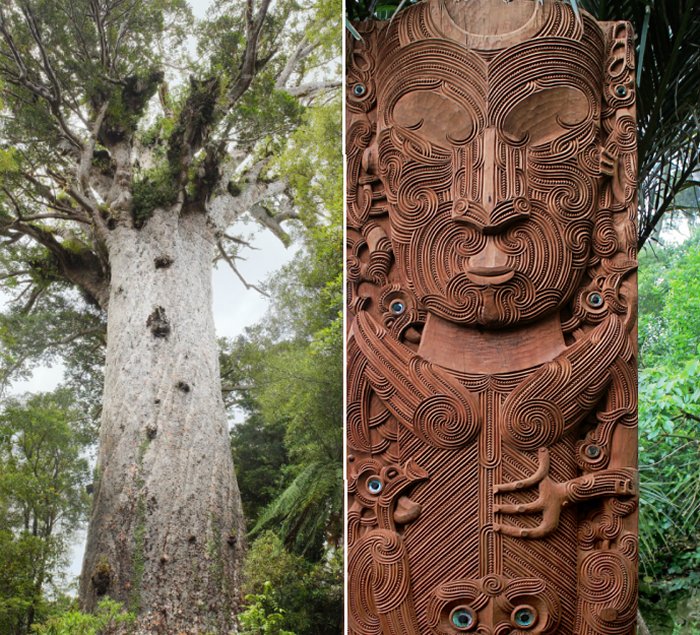Tāne: Lord Of The Forest Who Brought Three Baskets Of Knowledge To People In Maori Mythology
A. Sutherland- AncientPages.com - Through storytelling, from generation to generation, Maori (Māori) people passed down legends and stories revolving around mythical creatures, stars, nature, war, and Maori gods.
One of them is Tane (Tāne Mahuta), the tree and forest deity, who is the Polynesian god, but plays a particularly important role in Maori mythology.
Left: Tāne Mahuta - 'Lord of the Forest' - the trunk of over 4 meters (13 ft) in diameter is almost 18 meters (59 ft) tall, the overall height of the tree is over 51 meters (167 ft). This massive tree, the largest kauri in the world, contains about 517 cubic meters (18,300 cu ft) of wood. Image credit: Pseudopanax - Public Domain; Right: A carving of Tane (Tāne) nui a Rangi, a Maori god, sited at the entrance to the forest aviary at Auckland Zoo. Carving by Bernard Makoare, Manos Nathan, and Lyonel Grant - CC0 1.0 DEED
He is one of seventy children of the first parents - Rangi (god of the sky) and Papa (Papatuanuku, goddess of the Earth). Maori Legends tell us that Rangi and Papa embraced each other all the time, protecting their children in their arms.
The sons wanted to seize power but could not tear their parents' tight grip. They felt like they were in a dark 'cage.' They decided that their Father would be Heaven's ruler and their Mother's ruler of Earth, but they also wanted to finally separate from them.
Tane Mahuta, the oldest of siblings, tired of living in total darkness between his mighty sky father and earth mother, decided to help them and push their parents apart to create the world of light (Te Ao Marama) we live in today.
Their desire came true; Tane Mahuta pushed the parents away using his extraordinary powers. Finally, the brothers saw the light and a colorful world.
Myths and legends of Māori say that Tane has a crucial role as the forefather of birds, trees, and humans. Some Polynesian legends say that Tane made the first man, named Tiki. Other stories say he was trying to find a wife but did not have much luck. Later, Tane Mahuta fashioned a woman out of the best clay and named her Hine. This woman bore him many healthy children, who became descendants of the brave Maori.
Tane is a peaceful Polynesian god who dwells in the middle of the great forest of Tane (named after him). This vast forest is the kingdom of Lord Mahuta. He dresses the body of his Mother, Papa, in all kinds of vegetation, from tall sacred trees to small shrubs. The Māori people speak of great forests like this as Tane and of every tree, as if they were his children.
They greatly respect nature in all its forms, and when a tree falls, the event is treated as a sacred rite for the delivered material. Each part of the tree has different spiritual meanings because a tree bark is part of Tane's skin. Thus, a Māori canoe sculptor always performs some rituals to guarantee respect to all the gods in the forest as he takes wood and carves it into a canoe.
Such is the Māori great tradition related to nature.
Tāne Brings Three Baskets Of Knowledge
Asked by Io, the Supreme Being, Tane travels through the twelve heavens to retrieve the knowledge that will guide human existence on Earth.
Tāne receives the knowledge in the form of three baskets of knowledge (kete mātauranga), along with two stones for assimilation of knowledge to ensure that what is selected from the baskets is used wisely and not for personal gain but for all, for the greater benefit of society.
The baskets are: "Kete Tuaatea, which contains the knowledge of spiritual realities, the world we experience in ritual, our oneness with each other and the past; Kete Tuauri, which holds the understanding of what lies behind our sense experience, the knowledge that understands, "stands under," our sense experience; and Kete Aronui, which contains the experience of our senses, how we experience the natural world as apprehended by the senses.
Maori baskets. Credit: Yanajin33 - CC BY-SA 3.0
Across these three orders of reality, the baskets equip humans with the necessary skills and behaviors for living." 1
Additionally, Tāne receives the two sacred stones, one white and one red. The white stone was named Hukatai ('Seafoam'), and the red stone was called Rehutai ('Seaspray'). These stones ensure that what is selected from the baskets is helpful and used wisely; they urge careful assimilation of knowledge.
With all these treasures, Tāne successfully returns to 'the ordinary world and places the baskets and stones in the earthly traditional schools of higher learning ('whare wananga,' The baskets are placed above the seat of authority (the Taumata), where the sages and seers sit, and the two stones are placed on either side of the great ridgepole at the rear. Students graduating from the school of higher learning would take the white stone Hukatai (Seafoam) from the rear ridgepole in their mouth and symbolically swallow it.' 1
By acting so, the students entered a search for knowledge.
'The seafoam, the white stone Hukatai, is the wake generated by the canoe in motion and symbolizes the pursuit of knowledge as an accumulation of facts picked up along the way...' 1
Written by – A. Sutherland AncientPages.com Senior Staff Writer
Copyright © AncientPages.com All rights reserved. This material may not be published, broadcast, rewritten or redistributed in whole or part without the express written permission of AncientPages.com
Expand for referencesReferences:
- Chellie Spiller, The University of Waikato - https://link.springer.com/chapter/10.1057/9780230370432_58
Orbell, M. R., The Illustrated Encyclopedia of Maori Myth and Legend
Cotterell, Arthur. A Dictionary of World Mythology
More From Ancient Pages
-
 Why Was The Spartan Army So Successful?
Ancient History Facts | Apr 15, 2022
Why Was The Spartan Army So Successful?
Ancient History Facts | Apr 15, 2022 -
 On This Day In History: Vasco De Gama Departed On First European Voyage To India – On July 8, 1497
News | Jul 8, 2016
On This Day In History: Vasco De Gama Departed On First European Voyage To India – On July 8, 1497
News | Jul 8, 2016 -
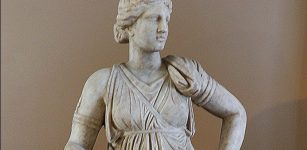 Goddess Artemis – One Of The Most Respected Olympians
Featured Stories | Oct 1, 2016
Goddess Artemis – One Of The Most Respected Olympians
Featured Stories | Oct 1, 2016 -
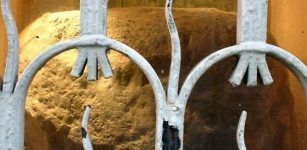 Legendary And Mysterious Stone Of Brutus – The London Stone Refuses To Give Up Its Secrets
Artifacts | Jan 21, 2022
Legendary And Mysterious Stone Of Brutus – The London Stone Refuses To Give Up Its Secrets
Artifacts | Jan 21, 2022 -
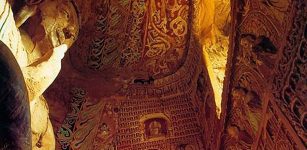 Yungang Grottoes: Marvellous Example Of Ancient Buddhist Rock-Cut Architecture
Civilizations | Sep 10, 2015
Yungang Grottoes: Marvellous Example Of Ancient Buddhist Rock-Cut Architecture
Civilizations | Sep 10, 2015 -
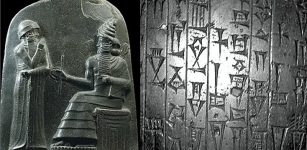 Hammurabi: The Great King Of Babylon And His Laws
Civilizations | Oct 21, 2016
Hammurabi: The Great King Of Babylon And His Laws
Civilizations | Oct 21, 2016 -
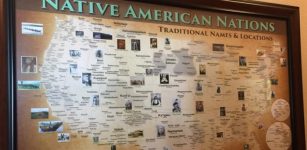 A Unique Native American Map Everyone Should See
Featured Stories | May 21, 2021
A Unique Native American Map Everyone Should See
Featured Stories | May 21, 2021 -
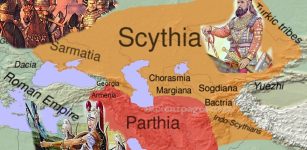 New Light On Appearance Of Scythians In Northern Black Sea Region
Archaeology | Mar 11, 2017
New Light On Appearance Of Scythians In Northern Black Sea Region
Archaeology | Mar 11, 2017 -
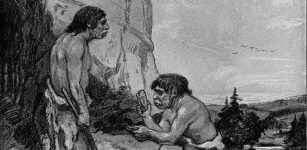 Unraveling The Mystery Of How Our Ancestors Created The First Spoken Words
Archaeology | Dec 6, 2021
Unraveling The Mystery Of How Our Ancestors Created The First Spoken Words
Archaeology | Dec 6, 2021 -
 Pharos Of Alexandria – One Of The First Lighthouses In The Ancient World
Featured Stories | Sep 1, 2015
Pharos Of Alexandria – One Of The First Lighthouses In The Ancient World
Featured Stories | Sep 1, 2015 -
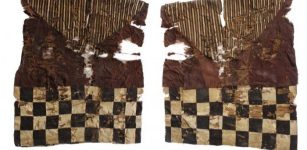 Rare And Well-Preserved Inka Tunic Discovered In Chile
Archaeology | Feb 14, 2023
Rare And Well-Preserved Inka Tunic Discovered In Chile
Archaeology | Feb 14, 2023 -
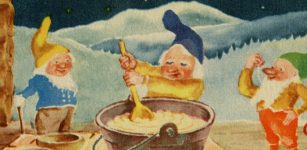 How Norwegians Expressed Resistance Against Nazi Occupation Using Christmas Cards
Featured Stories | Dec 21, 2023
How Norwegians Expressed Resistance Against Nazi Occupation Using Christmas Cards
Featured Stories | Dec 21, 2023 -
 Andvaranaut: Magical Ring That Made Gold And Was Stolen By Norse God Loki
Featured Stories | Apr 12, 2017
Andvaranaut: Magical Ring That Made Gold And Was Stolen By Norse God Loki
Featured Stories | Apr 12, 2017 -
 Prehistoric Humans Adapted To Intense Climate Change – New Study
Archaeology | Apr 22, 2022
Prehistoric Humans Adapted To Intense Climate Change – New Study
Archaeology | Apr 22, 2022 -
 India’s Mysterious Stonehenge: Prehistoric Complex Of Gigantic Standing Stones Of Willong Is An Enigma
Featured Stories | Jul 30, 2016
India’s Mysterious Stonehenge: Prehistoric Complex Of Gigantic Standing Stones Of Willong Is An Enigma
Featured Stories | Jul 30, 2016 -
 Delphic Mysteries – Unusual Prophecy And Birth – Part 1
Featured Stories | Mar 27, 2023
Delphic Mysteries – Unusual Prophecy And Birth – Part 1
Featured Stories | Mar 27, 2023 -
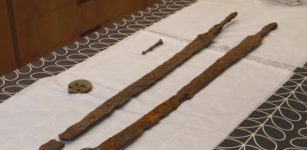 Unique Ancient Roman Cavalry Swords Found In Cotswolds, UK
Archaeology | Sep 18, 2023
Unique Ancient Roman Cavalry Swords Found In Cotswolds, UK
Archaeology | Sep 18, 2023 -
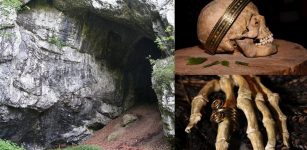 Puzzle Of The Bull Rock Cave – Ancient Mass Grave Remains Unexplained
Featured Stories | Mar 12, 2018
Puzzle Of The Bull Rock Cave – Ancient Mass Grave Remains Unexplained
Featured Stories | Mar 12, 2018 -
 Controversial Sand Mounds In Australia Are 6,000 Years Old Man-Made Burial Mounds – Radar Scans Reveal
Archaeology | Feb 10, 2018
Controversial Sand Mounds In Australia Are 6,000 Years Old Man-Made Burial Mounds – Radar Scans Reveal
Archaeology | Feb 10, 2018 -
 Mary Boleyn – King Henry VIII’s Other Woman And Sister Of Anne Boleyn
Featured Stories | Jul 24, 2018
Mary Boleyn – King Henry VIII’s Other Woman And Sister Of Anne Boleyn
Featured Stories | Jul 24, 2018

